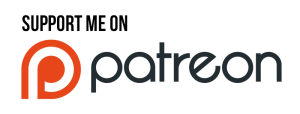The 3 Questions to Ask When Creating Content
When you’re creating content, it’s really easy to get caught up in the ‘I need to create a TON of this’ aspect of producing frequent updates. While frequency is a great motivator, it’s important to not lose sight of why you’re producing content, and the impact it will have on your intended audience. If you follow the old adage of ‘time is money’, then why would you spend time on content that’s going to have little to no impact on your business objectives? Creating content for the sake of creating content can be a fun exercise, but if you’re looking to fulfill a business need a bit of forethought can make a substantial difference.
For every piece of content you’re creating, I’ve found that it’s useful to keep the following 3 questions in mind:
What Content?
Just to step back for a moment…
By content I mean any content that you’re putting out into the world. Be it a blog post, a YouTube video segment, a Facebook post, or even a simple tweet. Understanding your motivations and intentions before you create your content can go a long way to informing how you approach your larger strategy.
#1: What does the viewer get out of this?
If the answer to this question is ‘uh, nothing?’, scrap it and start over.
Simply put, if the viewer isn’t getting anything out of it, then why are you spending time and money producing it? Now, that’s not to say that every piece of content needs to have a lofty goal that it’s trying to achieve. You’ll burn yourself out pretty quickly if you expect that every single thing you create needs to fulfill some super serious, larger objective. Just keep it in perspective, and consider both the audience and the platform.
A few examples of what a viewer might get out of your content:
- Information | Knowledge
- Special Info (Behind the Scenes, Sneak Peek, etc)
- Inspiration
- Entertainment
- Feeling valued
- A laugh
And plenty of others, depending on the audience and platform!
If you find yourself leaning too heavily on any one area, you’ll want to try switching up a bit and measuring the impact on your engagement rates. For example, if you’ve used your social channels to post almost entirely dry status updates, and then start to throw in more direct, personal interaction and humor, how does that change the impact on your audience and subsequent engagement rates?
#2: What do I want them to do as a result?
Someone has seen your content… now what?
If you don’t have an idea of what you want them to do, don’t be surprised if they fail to engage as a result. Whenever possible, you want to include a CTA (call-to-action) to accompany your content. It’s a simple truth that if you don’t ask people to do something, most of the time they won’t. People may be more than willing to give you feedback, RT your post, or subscribe to your YouTube channel, but if you don’t ask, you’re expecting them to do the digital equivalent of mind-reading.
I’m really prone to this myself. I can watch an AMAZING YouTube video from a creator that I’d love to see more of in the future. However, if the video doesn’t end in some sort of call to action that asks me to subscribe, changes are my caffeinated chipmunk of an attention span has already flitted off to another browser tab or video. If that same video says ‘if you liked this video, click the subscribe button!’ near the end, I am almost certainly going to do that before I wander off to find the next great GIF.
Some examples of what you might want a user to do after seeing your content:
- Engage (respond to a tweet, leave a comment, etc)
- Subscribe to your blog
- Read a related article
- Sign up to a mailing list
- Back your Patreon (shameless, I know)
- Share with a friend
- Subscribe to your YouTube channel
- Follow you on Instagram
- Tweet their feedback
- RT an important update
- Like / Favorite / Heart
Etc…
If you’re not considering what you want the viewer to do before you post the content, it’s unlikely that you’re going to get great results. If you’re creating content for a client, this can become even more critical as you’re asked to prove the ROI (return on investment) of your efforts. If you don’t know what you wanted the user to do, how do you track, let alone prove the value of the content that you’ve created.?
#3: What do I want to get out of this as a business?
And of course, what do you actually want to get out of this as a business?
This one has a bit of overlap with #2, but encompasses the larger goals and strategy outside of each individual piece of content. If your focus is around acquisition of new customers, your content strategy is going to take a different approach than if your core focus is user retention and establishing longer term relationships with your customers. (Note: These don’t need to be mutually exclusive)
In the case of Eat24, understanding their business goals helped inform their social media strategy. Having an official presence on Facebook was no longer helping them reach those goals, so they exited the platform and refocused their efforts to their other channels. Now they spend their efforts on a playful Twitter account focused on entertaining content and personal interactions, as well as an official blog and email mailing list.
A few examples of what you might want to get as a business:
- Engagement (Likes / RTs / Shares / Comments / etc)
- More followers / fans / subscribers
- More paying customers
- Increased Net Promoter Score (NPS)
- Positive feedback
- Higher click-through rate
- Visibility
- Status
Note: Not every piece of content you create has to directly focus on the larger business goal. If your community has been grumpy for a while on Twitter, you may want to ease off on more aggressive acquisition focused content in favor of some more personal interactions, even if the larger business goal is still ‘acquisition’. As with any relationship, being able to read what’s appropriate at a given point in time is key to your success long-term. However, if you’re not even sure what your larger business goals are, how will you ever know if you’re meeting (or exceeding) them?
In Closing
With practice, the above questions are just a quick mental check-in. Don’t stress yourself out too much when you’re getting started, but just try to keep them in mind so you don’t find yourself creating just for the sake of filling a time slot. You want to provide value to both your audience and your business, and doing a quick mental check against your content can help identify areas for improvement before it goes live!
Questions, comments, something shiny to distract my chipmunk brain? Drop me a line in the comments, or over @boopsocial!
Like my articles and want to see more? Consider supporting me on Patreon!









AJ says:
Thank you for this post. I am just starting in the Media Communications field as an Intern for a closed beta game called Heavy Metal Machines [shameless promotion], based in Brazil. This article totally killed some of the anxieties I have been having about my production of content as their North American Community Manager and gave me some useful tips to where I should go from here.
Definitely a breath of fresh air. Obrigada!